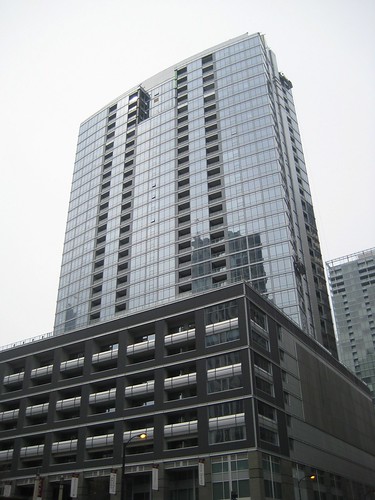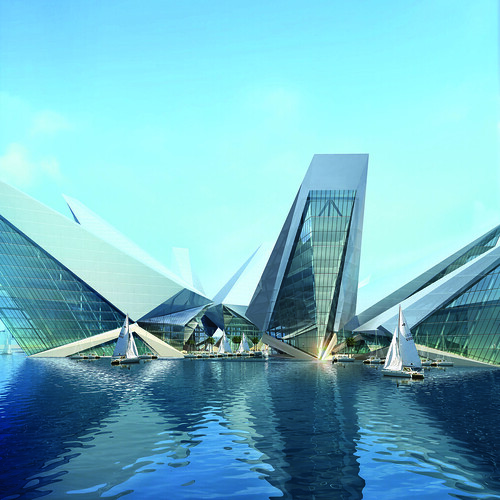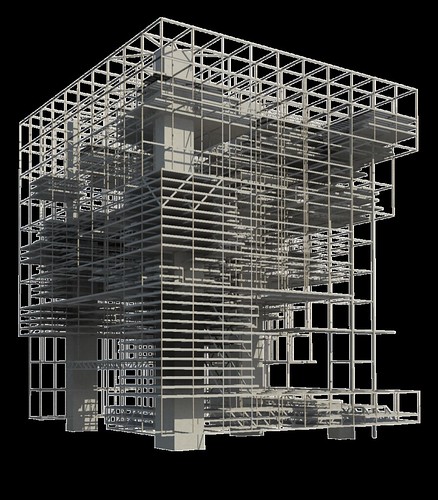
Two weeks ago I attended a lecture/discussion led by Tristan D’Estree Sterk and Douglas Pancoast at the
Flatiron Arts Building in Chicago. Both presenters are known for their forward-thinking approach to digital technologies in Architecture.

With that history in mind, I entered the recent lecture expecting a demonstration of technological superiority and an argument to adopt digital technologies or get left behind. Instead, the discussion was far more nuanced and philosophical. Instead of merely presenting a few “killer-apps,” Tristan and Douglas attempted to articulate a polemic between new digital technologies and classical design theory. The discussion that followed was intellectual, and to be honest, I had to look up some works, like polemic, when I got home.
Polemic: a controversial argument, as one against some opinion, doctrine, etc.
After leaving the discussion I continued to ponder some of the points that were raised. The following are my perceptions on two topics, as inspired by the talk.
During the presentation, Tristan recalled another architects observation that Western (particularly Christian) culture establishes itself in competition with/ or supremacy over the environment. Many other cultures revere nature or worship the sustaining elements. Christianity, from the earliest chapters of Genesis, places mankind above nature. This line of thought is provocative and largely subconscious but not trivial when it comes to reconciling history, sustainability and technology.
For example, many new analytical procedures have been developed to model efficient heat and light distribution in buildings. However, skeptics refer back to old standards for sizing air conditioners and illuminating rooms. They say that any other approach will be uncomfortable and more expensive. As we enter a new age in design that seeks to be more sustainable, architects must overcome skeptics and re-shape the culture to accept greener norms.
Another healthy discussion focused on the adaptability of buildings as machines for living. An attendee pointed out that the Flatiron Arts building (that the lecture was held at) provided an example of how adaptable traditional design is to new uses. The building began as a warehouse, then was utilized for office space and now houses an eclectic group of art studios. Over time, space has been partitioned into rooms of odd shapes and crooked hallways. Yet, the inefficiency in the layout is recognized as a charming feature of the space, ideally suited for its current residents.
Would new ‘super-buildings’ serve such a diversity of purpose over time? A building uniquely suited for one particular client, may not over time maintain its relevance. Could the Bilbao Guggenheim ever be re-purposed for anything other than a museum? Have some architects over-utilized computer modeling to generate complex forms simply for the sake of looking modern?
Before wholly embracing the digital revolution, perhaps it is worthwhile to ponder the reasons for doing so. I enjoyed the opportunity presented by Tristan and Douglas’ to consider the technological revolution occurring in architecture today.
 What is Pecha Kucha? First things first, try pronouncing it Pe-Cha-Ku-Cha with emphasis on the "Cha's." The expression is a colloquialism for chit-chat in Japanese, but since 2003 it has come to mean something special to young designers in several cities. Regular events feature architects, artists, and even engineers (in my case) giving fast-paced lively presentations. Each presenter is permitted only 20 slides and 20 seconds per slide. The results are entertaining to say the least.
What is Pecha Kucha? First things first, try pronouncing it Pe-Cha-Ku-Cha with emphasis on the "Cha's." The expression is a colloquialism for chit-chat in Japanese, but since 2003 it has come to mean something special to young designers in several cities. Regular events feature architects, artists, and even engineers (in my case) giving fast-paced lively presentations. Each presenter is permitted only 20 slides and 20 seconds per slide. The results are entertaining to say the least.




![Reblog this post [with Zemanta]](http://img.zemanta.com/reblog_e.png?x-id=9fb4bb88-3b0c-4d5e-ad10-6358e61c28af)

